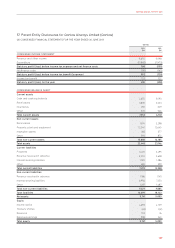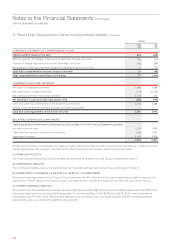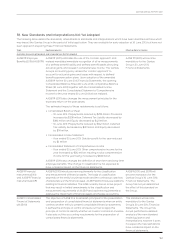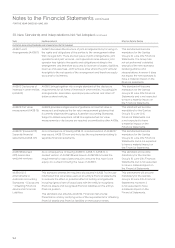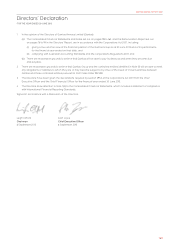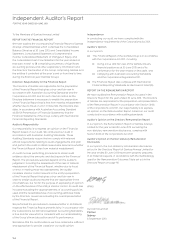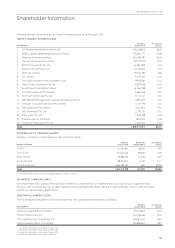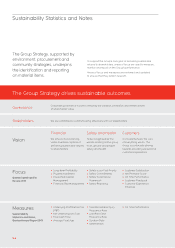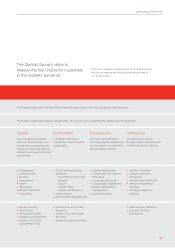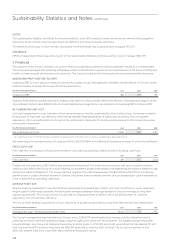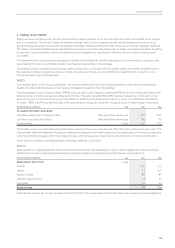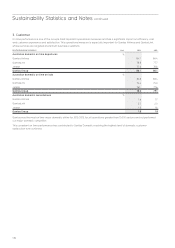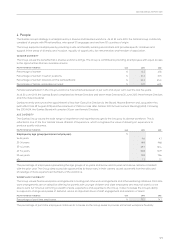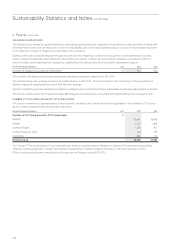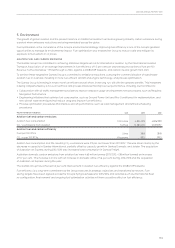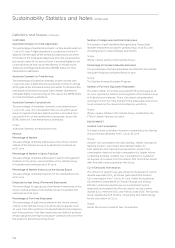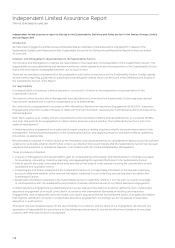Qantas 2013 Annual Report Download - page 171
Download and view the complete annual report
Please find page 171 of the 2013 Qantas annual report below. You can navigate through the pages in the report by either clicking on the pages listed below, or by using the keyword search tool below to find specific information within the annual report.
169
QANTAS ANNUAL REPORT 2013
2. Safety and Health
Safety is always our rst priority. We are committed to the safe operation of our aircraft and to the safety and health of our people
and our customers. The Group’s Safety and Health strategic vision “to be recognised as the world’s leading airline group in air,
ground and people safety and health” recognises that safety remains paramount in the context of our broader strategic initiatives.
The Safety and Health strategic goals highlight the importance of continuously improving our safety management system, targeting
known risks, improving safety culture and behaviours and engaging our regulators to minimise the risk of harm to people and
ourassets.
The implementation of systems and processes to identify and mitigate risk and the fostering of a culture in which our people take
responsibility for and are committed to safety are integral to delivering on this strategy.
The Qantas Group is committed to providing a safe workplace for our people, with risk-based safety and health programs across
the business in place to prevent workplace injuries. If people are injured, we are committed to assisting them to return to work
through proactive injury management.
SAFETY
The varying nature of the Group’s operations, work environments and work tasks require business units to tailor the Workplace
Health and Safety (WHS) aspects of their safety management system to their risk proles.
Total Recordable Injury Frequency Rate (TRIFR) and Lost Work Case Frequency Rate (LWCFR) are the key measures used by the
Qantas Group to monitor workplace safety performance. This year, Duration Rate (DR) has been added as an indicator of lost
productivity and to enhance the Group’s commitment to assist injured employees to return to work. To reafrm the importance
of safety, TRIFR, LWCFR and DR form part of the performance measures under the Group’s Executive remuneration framework.
Key Performance Indicators Unit 2013 2012
Occupational health and safety
Total Recordable Injury Frequency Rate Rate per million work hours 29.5 35.5
Lost Work Case Frequency Rate Rate per million work hours 9.6 11.6
Duration Rate Days 52.1 53.3
The Qantas Group recorded improved performance across all three injury measures in 2012/2013 when compared to prior year. This
improvement reects investment in targeted initiatives including manual handling training, the introduction of mechanical aids and
early intervention strategies which have helped reduce and manage body stress injuries, the main driver of injury performance.
There were no aviation or workplace health and safety fatalities in 2012/2013.
HEALTH
Absenteeism is a lagging indicator which reects employee health and wellbeing, the level of staff engagement and productivity.
Additionally, low injury rates and absenteeism are generally linked to positive trends in staff morale and productivity.
Key Performance Indicators Unit 2013 2012
Absenteeism per annum Days
Qantas 10.0 10.3
Jetstar 4.7 6.0
Qantas Freight 8.9 9.7
Qantas Frequent Flyer 2.7 3.3
Corporate 3.1 3.3
Qantas Group 9.1 9.6
Absenteeism days for the Group has improved from 2011/2012. This is improvement has been observed across all business segments.


